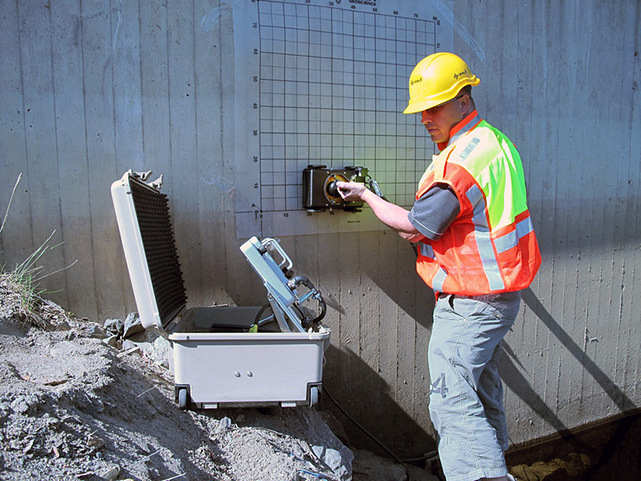Unveil the Transformative Power of Concrete Scanning in Making Best Use Of Efficiency and Safety And Security
Concrete scanning has actually arised as a vital tool in the building market, using unrivaled benefits in improving task performance and ensuring safety requirements. The transformative power of concrete scanning exists in its ability to provide in-depth understandings and real-time information, changing just how tasks are prepared and carried out.
Relevance of Concrete Scanning
Making certain the structural integrity and safety of building tasks begins with the essential action of conducting complete concrete scanning. Concrete scanning is a non-destructive technique used to discover and map subsurface elements within concrete frameworks.
The value of concrete scanning can not be overemphasized, as it plays a crucial duty in preventing crashes, reducing job hold-ups, and guaranteeing the long-lasting longevity of the building. By recognizing possible hazards before the building stage starts, home builders can apply appropriate precaution and make informed decisions relating to the style and implementation of the task. Furthermore, concrete scanning assists in enhancing job timelines and spending plan by preventing unforeseen costs and delays that might arise as a result of unpredicted obstructions within the concrete. Inevitably, purchasing detailed concrete scanning is a positive strategy that boosts both performance and safety in building tasks.
Exactly How Concrete Scanning Functions
Concrete scanning runs as an important device in building jobs by employing sophisticated innovations to discover and map subsurface aspects without triggering structural damage. Ground Permeating Radar (GPR) and Electromagnetic Induction (EMI) are two primary techniques used in concrete scanning. GPR works by producing high-frequency radar pulses right into the surface, which get better when they come across subsurface things or gaps. The time considered the signal to return indicates the deepness and area of the things. EMI, on the other hand, uses electro-magnetic areas to recognize variations in product compositions, such as recognizing rebar or conduits within concrete frameworks.
During the scanning process, the data gathered is examined in real-time, permitting immediate identification of possible risks or barriers below the surface. By utilizing these advanced technologies, concrete scanning considerably lowers the danger of pricey problems and injuries on building and construction sites.
Benefits of Concrete Scanning
Making use of innovative scanning modern technologies in building and construction jobs offers a plethora of advantages, enhancing both efficiency and safety and security on-site. One of the main benefits of concrete scanning is the ability to spot and situate embedded things such as rebar, post-tension cable televisions, and channels properly. By recognizing these components before exploration or reducing right into concrete frameworks, the threat of unintentional strikes is substantially lowered, stopping potential injuries to workers and damage to the structure itself. Concrete scanning assists in planning and creating a lot more successfully, as it offers exact details concerning the location and depth of architectural parts.

Study: Concrete Scanning Success

In another case, a building firm used 3D concrete scanning to analyze the condition of maturing concrete frameworks in a historical building. The in-depth scans offered useful understandings into the level of deterioration and helped focus on upkeep initiatives successfully. By proactively resolving locations of issue recognized through scanning, the company was able to prolong the life expectancy of the framework and make certain occupant security.
These situation researches emphasize the transformative power of concrete scanning in boosting performance, accuracy, and safety in construction projects.
Carrying Out Concrete Scanning in Projects
Carrying out innovative scanning modern technologies during construction projects has actually come to be significantly vital for boosting accuracy and security. By integrating concrete scanning into project planning and execution, building teams can identify click here for more info possible dangers, such as rebar or post-tension cords, concealed within concrete frameworks. This positive method minimizes the risk of crashes, hold-ups, and expensive rework, eventually resulting in more reliable job timelines and budget plans.
To execute concrete scanning efficiently, project supervisors ought to collaborate very closely with experienced scanning specialists to establish one of the most appropriate scanning techniques for the details task needs. Engaging scanning experts from the beginning of a task allows the team to develop browse around this site extensive scanning strategies that attend to key locations of problem and make sure complete data collection.
In addition, integrating concrete scanning right into regular task workflows can simplify decision-making processes, as real-time check information offers immediate insights right into the condition of concrete frameworks - Concrete Scanning. This data-driven approach facilitates notified analytical and enables groups to make changes without delay, cultivating a culture of performance and safety throughout the job lifecycle

Final Thought
Finally, concrete scanning plays an essential function in boosting efficiency and safety and security in building jobs. By making use of innovative technology to map and identify out underlying frameworks within concrete, this procedure helps to stop expensive errors, make certain architectural integrity, and reduce dangers on website. With the capability to discover concealed aspects and offer precise data, concrete scanning verifies to be a beneficial device for optimizing job end results and making the most of general success.
Concrete scanning is a non-destructive method used to spot and map subsurface elements within concrete frameworks. Furthermore, concrete scanning assists in enhancing project timelines and budget by avoiding unanticipated costs and delays that might emerge due web link to unanticipated obstructions within the concrete. One notable case research study involves a large-scale remodelling project where concrete scanning played an essential role in ensuring task success.In one more case, a construction firm used 3D concrete scanning to evaluate the condition of maturing concrete structures in a historic structure. By integrating concrete scanning right into project preparation and implementation, construction groups can determine potential risks, such as rebar or post-tension cables, concealed within concrete structures.